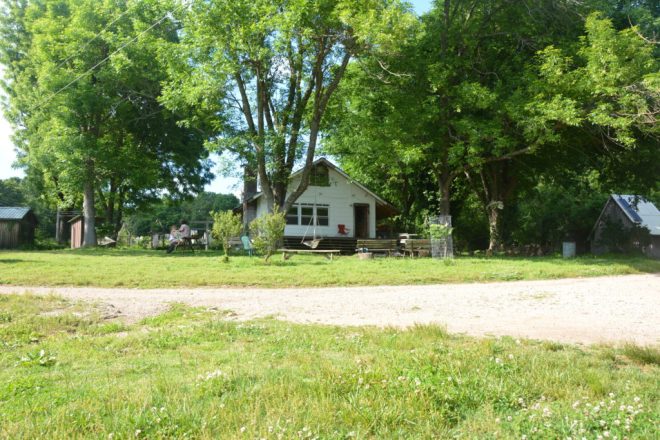by Raven Cotyledon
This is for commune geeks.
Maximus put out a video of The Phylogenetic History of the FEC. It was surprisingly popular. My one complaint was that it left out so many details.
Maximus shared with me the spreadsheet that his video was based on. Using that, Kat Kinkade’s books, Laird’s blog, the Communities Directory, and my own memory of events in the 1960s, 1990s, and recently, I intend to put out a detailed description of the history of the communes and the Federation of Egalitarian Communities.
I will break it up by decades and publish one a month to keep it from getting too long and boring. This part covers the 1960s and 1970s.
The 1960s
1967 Twin Oaks is founded. That was fifty-two years ago and Twin Oaks is still going strong with nearly a hundred members. To put it in context, there were hundreds of ‘communes’ formed in the late sixties. Very, very few of them are still around. Kat Kinkade attributed Twin Oaks survival to a combination of hard work, structure, and freedom, and getting big fast enough. She thought thirty people was “the minimum for security” and said that TO reached that in their third year.

The 1970s
1970 East Wind was started. Kat Kinkade claimed that she “left Twin Oaks, taking two members and some visitors with me, and we set out to form a community that would be just like Twin Oaks in every way except one: We would never close our doors!” East Wind is also still around with about sixty members.

1974 Sandhill Farm founded. Laird Schaub described its founding this way: “In February 1973 I was in a public library and happened across the current issue of Psychology Today. It included an excerpt from a new book by Kat Kinkade, A Walden Two Experiment. It described the first five years of Twin Oaks Community, and it changed my life. …
“By the following spring, we had founded Sandhill Farm: four people willing to try to make that happen.
“Because Twin Oaks was the inspiration and because I’d already done a fair amount of work to reject materialism, we set up Sandhill as an income-sharing community, where all earnings would be pooled. The community still operates that way today.”

1976 The Federation of Egalitarian Communities was formed. Laird’s description: “…five North American communities shared a dream of cooperation. As a result, representatives of these communities got together and founded the Federation of Egalitarian Communities.” The first Assembly was in November of that year. Attending communities were Twin Oaks, East Wind, Aliya, Aloe, Dandelion, Genesis, North Mountain, and Springtree.
1977 There seemed to have been three Assemblies that year, one in February, one in October, and one in November. (At least, that’s what was listed.) Aliya and Springtree seemed to have already dropped out. The February Assembly lists the population of the other communities at the time, Twin Oaks (72), East Wind (55), Aloe (6), Dandelion (13), and North Mountain (12).

1978 On the other hand, there only appeared to be one Assembly in 1978, in July, with the same five communities.
1979 There were two Assemblies in 1979, one in January and one in August, and a new community, Los Horcones, came to the January Assembly, and the August Assembly saw Sandhill attending for the first time. The August Assembly also listed community populations at Twin Oaks (75), East Wind (55?) [yes, that’s how it’s listed], Aloe (10), Dandelion (10), Los Horcones (12), and North Mountain (12). There was no population listed for Sandhill.
That was the beginning. Only Twin Oaks, East Wind, and Sandhill are still around today and right now, Sandhill is struggling. But the FEC continues to this day, with new communities and new energy.
Next month, I will detail the FEC through the eighties with communities coming in while others leave or disband. It will probably have too much detail for most folks, but I find it fascinating to watch the communities and the organization as it grows and struggles. This is how we change the world folks, one small step at a time.

(If you have any information about the early days of the FEC or its history at any period, please add it in the comments.)
____________________________________________________________________________
Thanks for reading! This post was made possible by our patrons on Patreon. The Commune Life team works hard to bring you these stories about our lives in community, and that work couldn’t happen without support from our audience. So if you liked this article, and want to help us make more like it, head on over to https://www.patreon.com/communelife to join us!
Deep gratitude to all of our patrons:
Communities
- Acorn Community
- Compersia Community
- Cotyledon Community
- East Brook Community Farm
- The Federation of Egalitarian Communities
- Twin Oaks Community
Communards
- Tobin Moore
- Kai Koru
- Jenn Morgan
- Jonathan Thaler
- Nance & Jack Williford
- Julia Evans
- William Croft
- Aaron Michels
- Cathy Loyd
- Laurel Baez
- Magda schonfeld
- Michael Hobson
- Sasha Daucus
- William Kadish
Thanks!